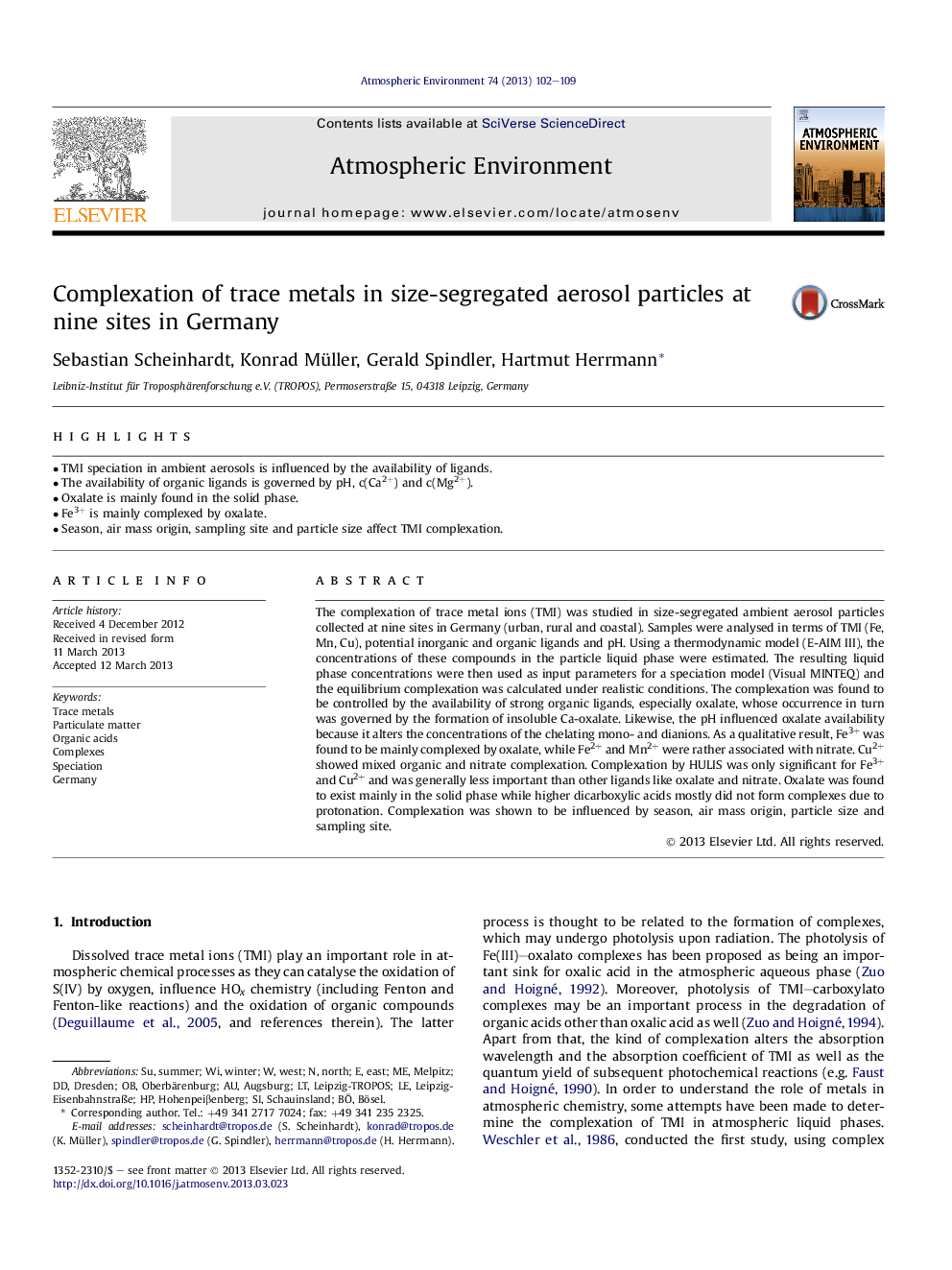| کد مقاله | کد نشریه | سال انتشار | مقاله انگلیسی | نسخه تمام متن |
|---|---|---|---|---|
| 4438178 | 1620397 | 2013 | 8 صفحه PDF | دانلود رایگان |

• TMI speciation in ambient aerosols is influenced by the availability of ligands.
• The availability of organic ligands is governed by pH, c(Ca2+) and c(Mg2+).
• Oxalate is mainly found in the solid phase.
• Fe3+ is mainly complexed by oxalate.
• Season, air mass origin, sampling site and particle size affect TMI complexation.
The complexation of trace metal ions (TMI) was studied in size-segregated ambient aerosol particles collected at nine sites in Germany (urban, rural and coastal). Samples were analysed in terms of TMI (Fe, Mn, Cu), potential inorganic and organic ligands and pH. Using a thermodynamic model (E-AIM III), the concentrations of these compounds in the particle liquid phase were estimated. The resulting liquid phase concentrations were then used as input parameters for a speciation model (Visual MINTEQ) and the equilibrium complexation was calculated under realistic conditions. The complexation was found to be controlled by the availability of strong organic ligands, especially oxalate, whose occurrence in turn was governed by the formation of insoluble Ca-oxalate. Likewise, the pH influenced oxalate availability because it alters the concentrations of the chelating mono- and dianions. As a qualitative result, Fe3+ was found to be mainly complexed by oxalate, while Fe2+ and Mn2+ were rather associated with nitrate. Cu2+ showed mixed organic and nitrate complexation. Complexation by HULIS was only significant for Fe3+ and Cu2+ and was generally less important than other ligands like oxalate and nitrate. Oxalate was found to exist mainly in the solid phase while higher dicarboxylic acids mostly did not form complexes due to protonation. Complexation was shown to be influenced by season, air mass origin, particle size and sampling site.
Journal: Atmospheric Environment - Volume 74, August 2013, Pages 102–109